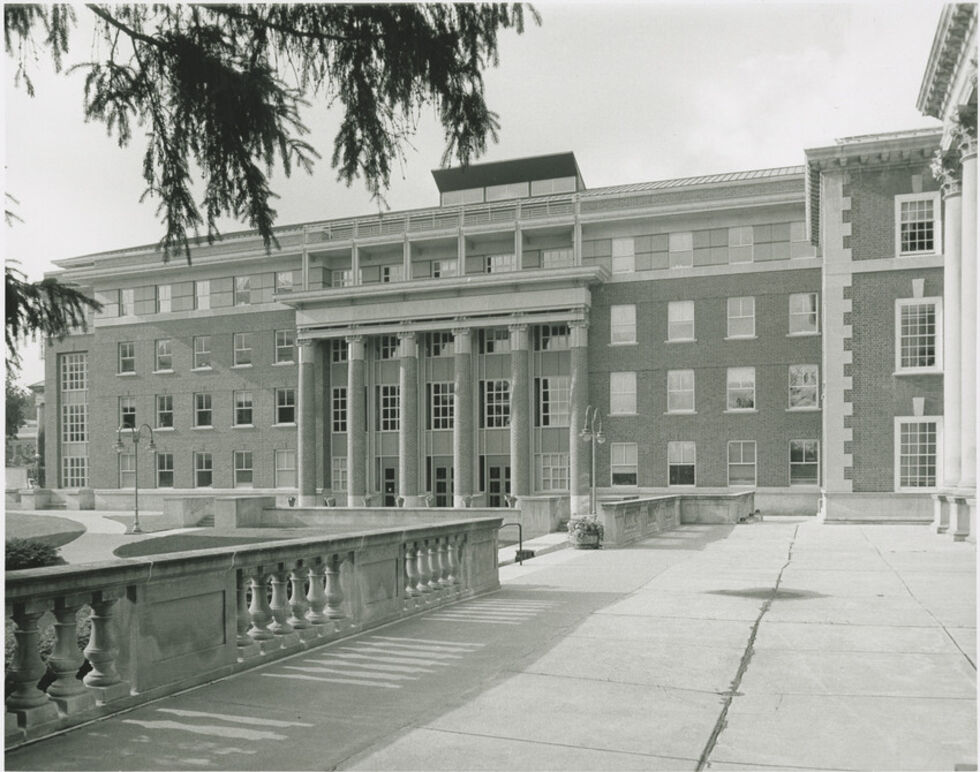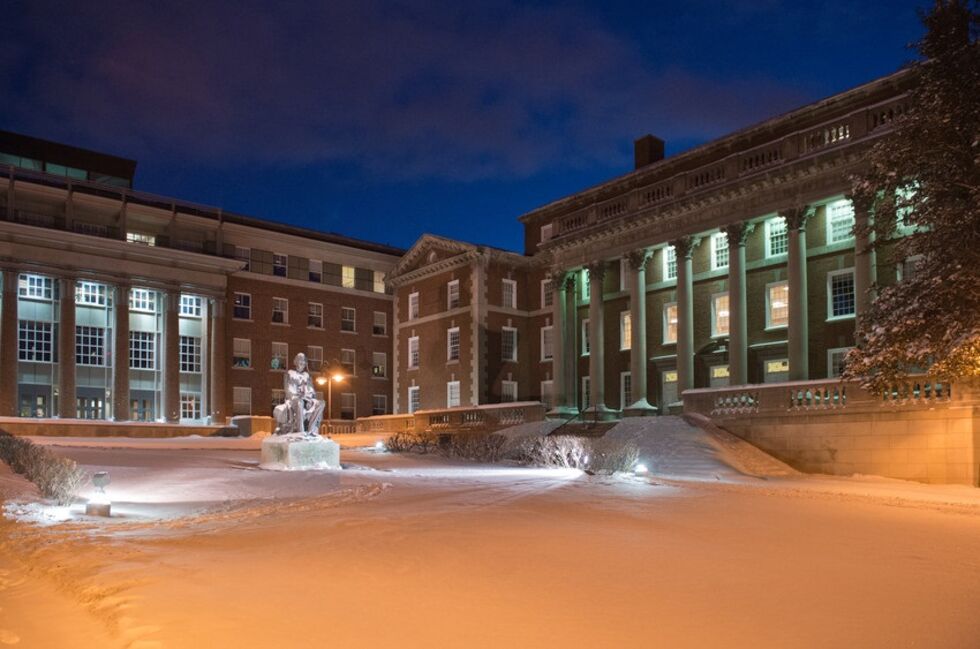Eggers Hall
"Melvin A. Eggers Hall" by Bohlin, Cywinski, and Jackson , 1992-1993
Eggers Hall is named for Chancellor and former economics professor Dr. Melvin A. Eggers. It is one of two connected buildings which house the Maxwell School of Citizenship and Public Affairs, which includes the study of history, economics, political science and geography. The building has a public events room, a 100-seat lecture hall, administrative and faculty offices, offices for a number of Maxwell School programs, and a café. It is linked to Maxwell Hall by a three-tiered atrium, which is one of many open, public spaces in the complex meant to encourage students and faculty to mingle and promote an interdisciplinary culture.
Eggers Hall was built as part of the expansion of the Maxwell School in order to offer more extensive programs, professorships, and scholarships. Thus, Eggers Hall became part of 5 year, $50-million expansion effort to create a ‘Maxwell Complex’ with the goal to forge an “integrated social science complex.” When it was built Eggers, housed departments of history, economics, political science and geography. Eggers Hall was developed to triple the size of Maxwell School and allow the school to consolidate in one location without losing its traditional home in Maxwell Hall. With its construction, Eggers helped to solidify the formal space of the Shaw quadrangle centered on the domed Hendricks Chapel.
Melvin A. Eggers was born on February 21, 1916, in Fort Wayne, Indiana. He earned his bachelor’s degree (1940) and master’s degree (1941) in economics from Indiana University. Eggers served as a Japanese-language officer for the US Navy during World War II. Following the war, he worked for the US government within the war department as an economic analyst in Tokyo. He was discharged in 1946 as a ranking lieutenant. In 1950, Eggers received his Ph.D. from Yale University and joined the faculty of Syracuse University For the following decade, Eggers was a professor of economics with a specific focus on finance, industrial organization and economic development; he also became chair of the Economics Department. He was appointed provost and vice chancellor for Academic Affairs in 1970. Then on June 4, 1971 Eggers was inaugurated to the University’s highest office. He became the ninth Chancellor of Syracuse University. Eggers changed the face of the campus through two dozen major building projects including the Carrier Dome, Center for Science and Technology, and Schine Student Center. Eggers made the executive decision to build the Dome in the tight space on the southwest corner where Archbold Stadium stood. The Dome was completed in 1980, making Syracuse University’s trademark facility the only domed stadium in the Northeast and the largest structure of its kind on a college campus in the entire country at that time. On August 19, 1991, Eggers retired, after a 20-year tenure as Syracuse University’s Chancellor. In October of 1994, Syracuse University dedicated Eggers Hall, which connected to Maxwell Hall and brought together all the programs of the Maxwell School for the first time since the late 1930s.
SU University Archives; SU Photo and Imaging Archive; SU Photo and Imaging Center; Melvin A. Eggers Papers: A description of his papers at the Syracuse University Archives. SU Archives Special Collections Research Center.


